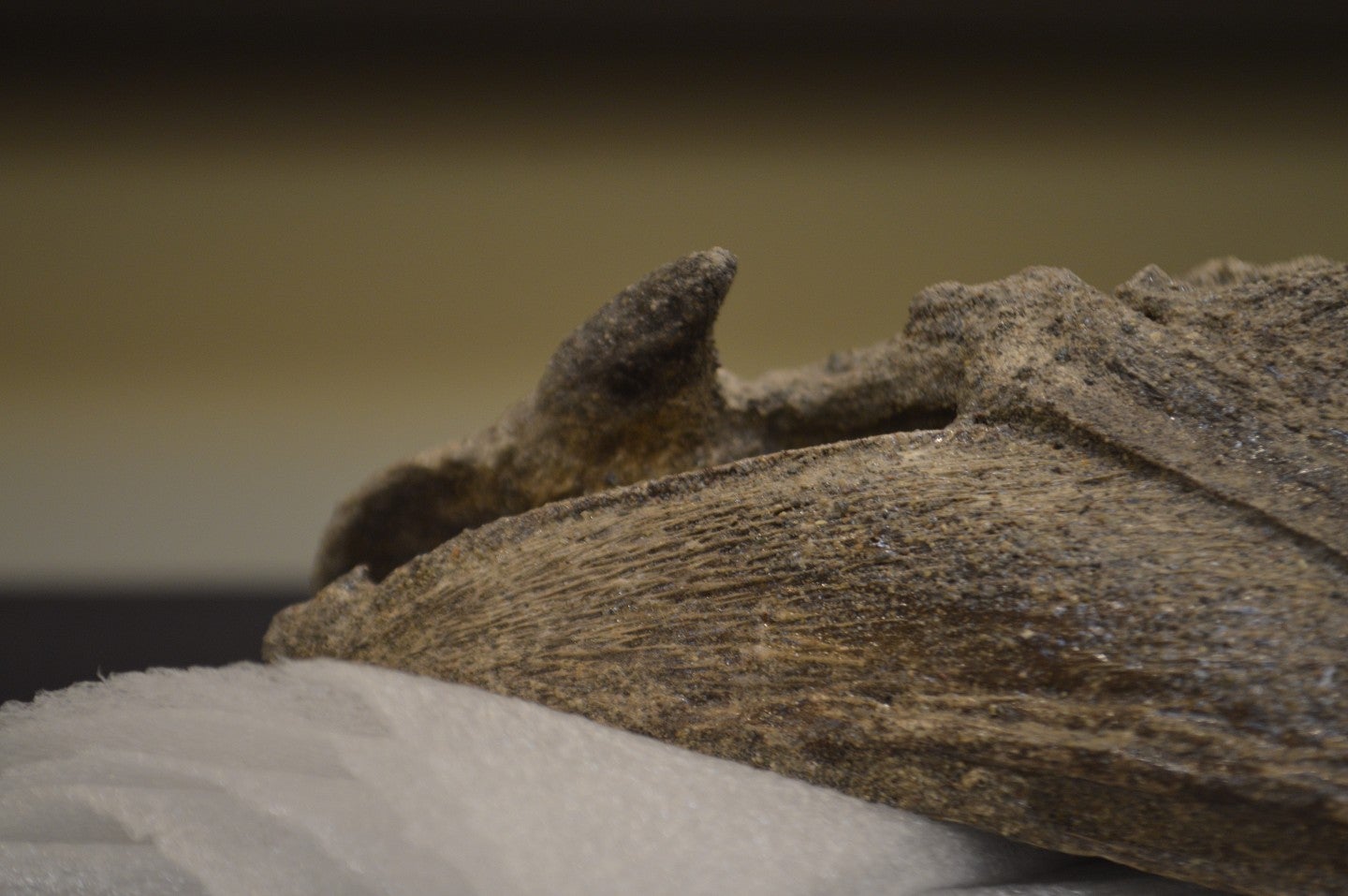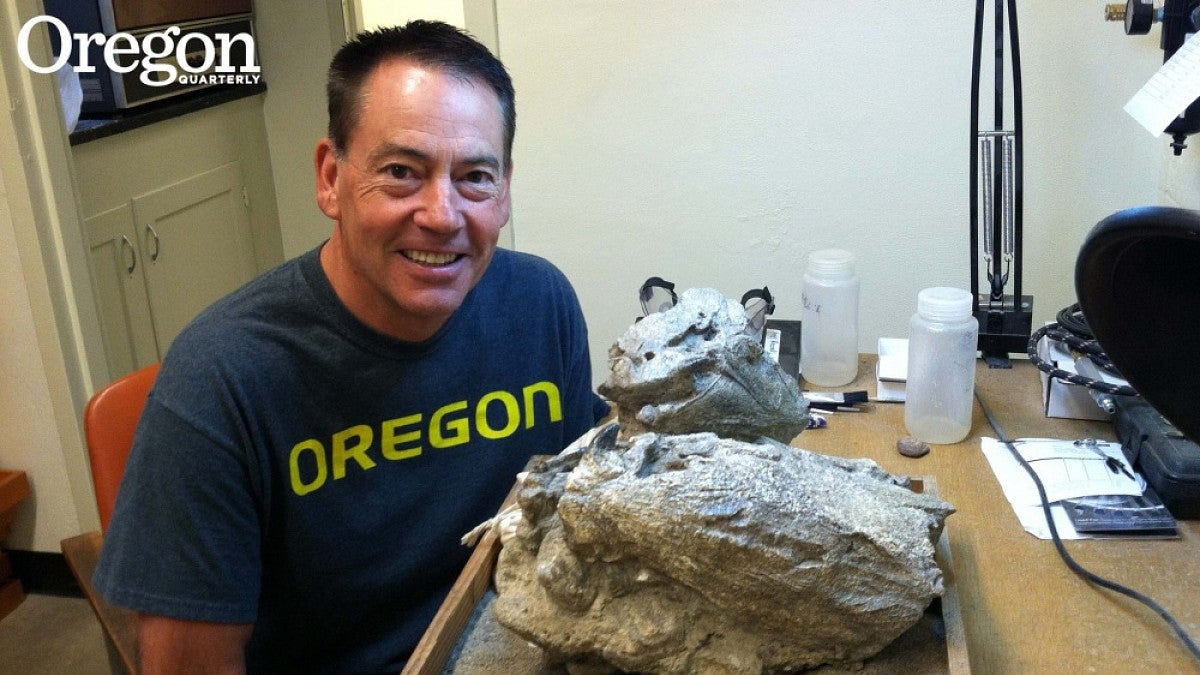Even now, the smell of fresh sage brings back memories of collecting fossils at Cant Ranch (now part of the John Day Fossil Beds National Monument) with my father when I was a young boy. It’s probably why I became a high school science teacher for 31 years, and why I contacted assistant professor of geology Edward Davis, manager of the UO’s Condon Fossil Collection, when I retired, to ask about volunteering. He suggested I become an interpreter at the Museum of Natural and Cultural History and get back to him, which I did.
After several months of showing visitors the museum and moving specimens into the newly acquired metal cabinets, Davis mentioned that he remembered that I had prepared fossils for other museums and asked if I would like to work on some. “That would be good,” I said, trying to contain my excitement as we walked down to his lab space in the bottom of Columbia Hall. I knew this area well because as a UO undergraduate, I often used Room 47, complete with its rock specimens, as my study room away from the fraternity.
In his lab, he started showing me fossils that needed preparing: concretions from the Astoria Formation, a skull from the John Day area, a conglomerate with fish material in it, a cast with mammoth material, and so forth. The list was getting so long that I had to stop him and ask, “Which one would you like me to work on?”
“The fish,” he replied.

“Oh no!” I thought to myself. I have worked on fish in the past, and they are incredibly difficult because the bones are so small, so delicate, and almost always disarticulated. But I couldn’t say no. This was the first thing I had been asked to prep, and he really didn’t know anything about me. What if I couldn’t do it, or worse, wrecked it? I would never be asked to prepare another specimen. I tried not to look worried.
So the fish it was. We brought in a table from the hall and set up a lamp. He left, and I went to work with the dental tools. As hours slipped by, I exposed more and more bone, and hmmmm . . . I went up to his office and said, “You should come and look at this. I’ve got teeth.” The look I got was that I probably didn’t know a tooth from pebbles in a conglomerate, and besides, there couldn’t be teeth; this was just fish parts. But down to the lab he came, and when he saw it, he smiled and started taking pictures. It was a giant salmon skull. No, it was two giant salmon skulls. The first ever with articulated teeth!
The Museum of Natural and Cultural History had just opened its new geologic wing with the famous sabertooth salmon (Oncorhynchus rastrosus) mural and display. I knew the sabertooth salmon was one of the most important fossils found in Oregon, but these skulls were different. The huge fangs didn’t point down, but instead came out of the sides of the skull. Because no skull had ever been found with teeth attached, it had been assumed they pointed down, like virtually all teeth do.
After more than a year of preparation, one of the salmon skulls is on display in the museum. I know it will be the most important fossil I will ever prepare. I’m sure glad I became a volunteer. It is also why we need to continue to study prehistoric life, because just when you think you know all the answers, a giant “spiked” salmon can jump out of the rock.
—By Patrick Ward
Patrick Ward, BS ’79, recently moved to Eugene with his wife, Kathy Davis Ward, BS ’80. Two of their three kids are also Ducks.


